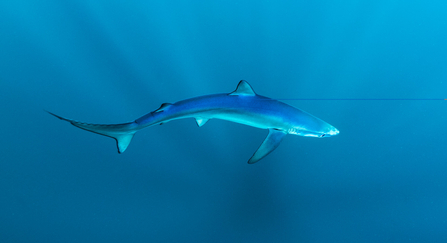Last year, the Benyon review of Highly Protected Marine Areas (HPMAs) was published by Defra. The Wildlife Trusts backed its recommendations that HPMAs should be an essential part of the UK network for protection and recovery of the marine environment, and that the government should introduce HPMAs as soon as possible.
Today, on World Oceans Day 2021, Defra has announced it will begin the process for designating HPMAs by the end of 2022, setting an ambitious commitment to protect our seas. The Wildlife Trusts believe there is an overwhelming case for the designation of HPMAs across our seas which would see a ban on all damaging activities, offering the strictest possible protections for the marine environment and giving nature the best chance of recovery.
The Wildlife Trusts have called for HPMAs for the last three years and launched a petition urging speedy implementation which was signed by over 10,000 people. Joan Edwards, director of policy and public affairs at The Wildlife Trusts, was invited to be on the Government’s HPMA panel.








